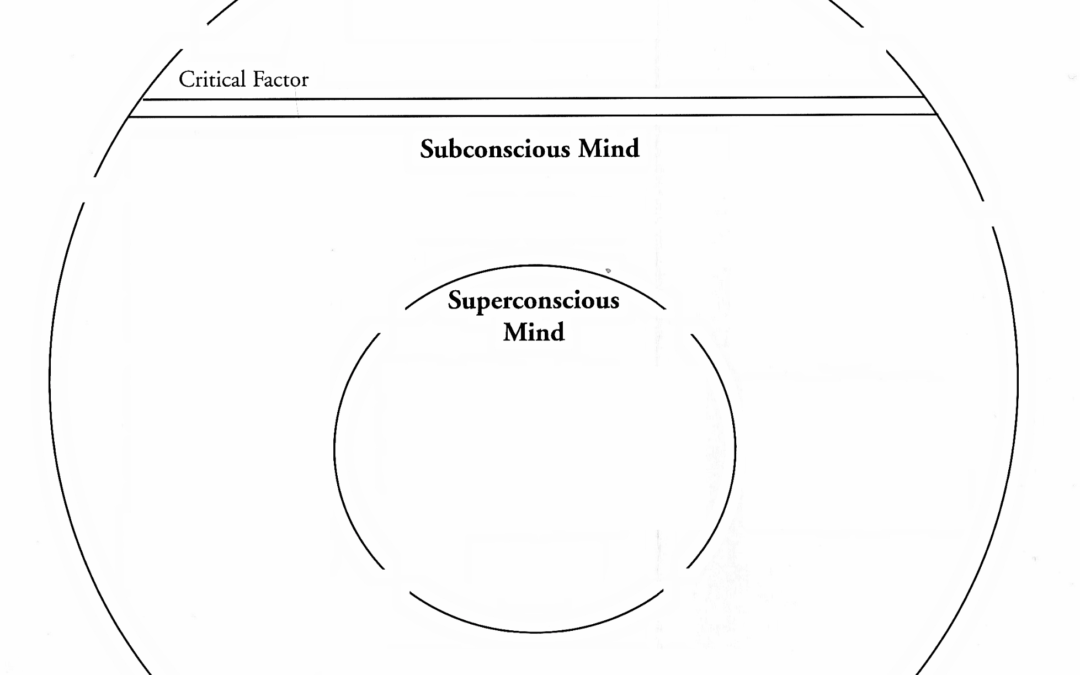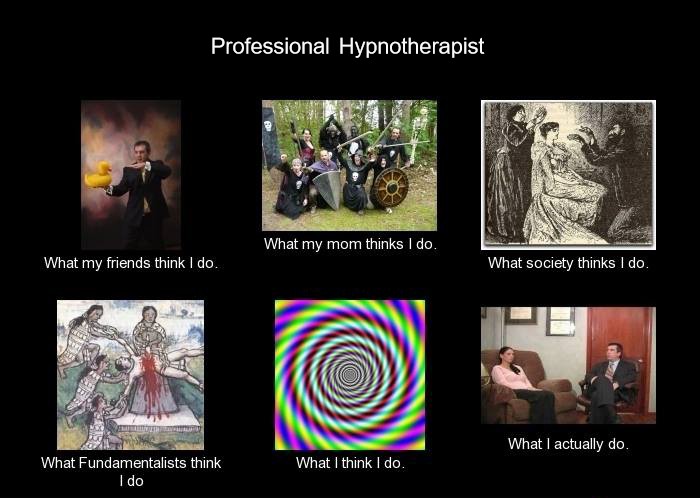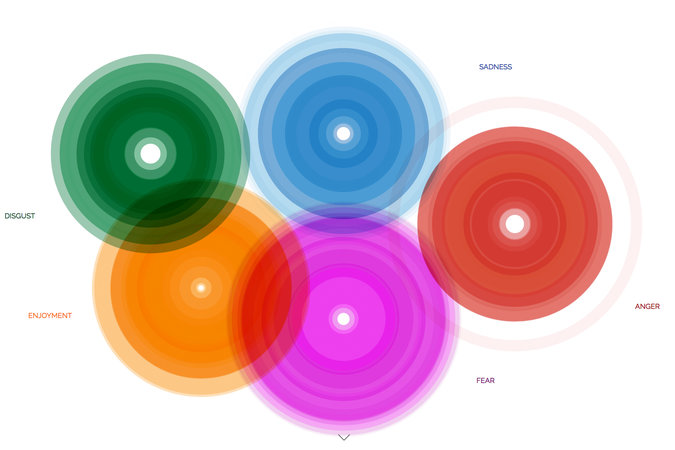Brian K Proulx, CCHt
The Mind : A Hypnotherapist’s Perspective
You Are Not Your Brain
Your brain is a biological organ that serves as the control center of the nervous system. It processes sensory inputs, coordinates bodily functions, and enables complex activities like reasoning and movement. Yet, it is not the entirety of who you are.
The adult human brain is a three-pound mass of gray matter nestled within the skull. There are various interpretations of what the mind is and its relationship with the brain, but they are not one and the same. Modern science refers to the enigma of how the physical brain gives rise to subjective consciousness as “the hard problem,” a term coined by philosopher David Chalmers to highlight the challenge of explaining why and how physical processes in the brain produce subjective experiences, such as the taste of coffee or the feeling of love. It is theorized that the mind is the manifestation of thought, perception, emotion, determination, memory, and imagination that takes place within the brain. To illustrate this distinction, consider your body as a computer, with the brain as the hardware performing functions and the mind as the software driving its operations.
You Are Your Mind
The mind has been debated extensively by psychologists, philosophers, and scientists due to its subjective and elusive nature. For example, René Descartes, a 17th-century philosopher, proposed a dualist view, arguing that the mind and body are distinct substances, with the mind being non-physical and the brain a physical entity. While Descartes’ dualism has been largely critiqued by modern neuroscience, it underscores the persistent challenge of defining the mind’s nature. In reality, the so-called parts of the mind do not exist as distinct entities—they are oversimplified labels for a complex interplay of processes. This approach simplifies the mind to make it more comprehensible. The study of the mind remains open to interpretation and should be viewed not as a rigid science but as a philosophical inquiry. The mind, for all intents and purposes, remains a mystery.
Some schools of thought interpret the mind as comprising two components—the conscious and subconscious, with the subconscious sometimes referred to as the unconscious mind. Others describe the mind as having three levels of awareness—conscious, subconscious, and superconscious—each with distinct functions and capabilities. The superconscious, often discussed in spiritual and metaphysical traditions, is thought to represent a higher state of awareness, potentially connecting individuals to universal truths or intuitive insights beyond ordinary consciousness.
Chart: The Brain and Mind: A Model of the Mind Analogy
| Aspect |
Brain |
Mind |
| Definition |
A biological organ, the control center of the nervous system. |
The manifestation of thought, perception, emotion, determination, memory, and imagination. |
| Physicality |
Tangible: A three-pound mass of gray matter within the skull. |
Intangible: Subjective consciousness, an elusive and emergent phenomenon. |
| Role |
Processes sensory inputs, coordinates bodily functions, enables movement. |
Shapes thoughts, emotions, and identity through a complex interplay of processes. |
| Computer Analogy |
Hardware: Executes physical processes (e.g., neural firing). |
Software: Drives subjective experience, oversimplified as “parts” or labels. |
| Relation to Consciousness |
Physical substrate; how it produces consciousness is “the hard problem.” |
Subjective essence; a mystery that defies scientific proof and remains debated. |
| Components |
Neural substrate enabling all levels of awareness (e.g., prefrontal cortex for decision-making). |
Conscious: Analytical thought, decision-making. Subconscious: Automatic processes, beliefs. Superconscious: Higher intuition, universal connection (see footnote). |
| Study/Interpretation |
Studied via neuroscience; measurable (e.g., brain scans, EEG). |
Studied via philosophy and psychology; open to interpretation, a mystery per the Model of the Mind. |
| Example |
Brain activity during meditation shows increased connectivity in the default mode network. |
Meditative states may produce feelings of unity or transcendence, not fully explained by brain activity. |
Footnote: The superconscious is a concept rooted in traditions like transpersonal psychology and Eastern philosophy, where it is seen as a state of heightened intuition or spiritual connection, though it lacks empirical validation in mainstream neuroscience.
The Conscious Mind
The conscious mind is active while an individual is awake and can focus on only a few tasks at a time. Research indicates that the conscious mind can process five to nine pieces of information simultaneously. It is aware of the present moment and mindful of both the external environment and internal thoughts. It governs physical activities, such as walking, breathing, and muscle movement, and is attuned to the five senses: sight, taste, smell, touch, and hearing.
The conscious mind’s limited capacity, often referred to as working memory, is a key focus of cognitive science. For instance, George Miller’s seminal work on “the magical number seven, plus or minus two” suggests that humans can hold a small number of items in conscious awareness, which explains why multitasking is challenging. This limitation highlights the brain-mind distinction: while the brain’s neural networks process vast amounts of data (e.g., sensory inputs from the retina), only a fraction reaches conscious awareness, shaped by the mind’s subjective lens. The conscious mind’s role in sensory perception and decision-making ties directly to the “hard problem,” as it raises questions about why these neural processes feel like something rather than merely occurring mechanically.
The Conscious Mind: Reasoning and Thinking
The conscious mind is the “thinking” aspect of the mind, encompassing both inductive and deductive reasoning. Inductive reasoning involves taking specific observations and forming broader generalizations that are considered probable, though not guaranteed to be accurate. For example, if my dog is small and has brown fur, inductive reasoning might lead me to conclude that all small dogs have brown fur. Deductive reasoning, in contrast, moves from general premises to specific conclusions based on logic. If the premises are true and the logic is valid, the conclusion must be true. For instance, all dogs have two ears; my Shelties are dogs; therefore, deductive reasoning concludes that my Shelties have two ears.
Reasoning is a hallmark of the conscious mind’s analytical capabilities, supported by brain regions like the prefrontal cortex, which is active during logical processing. Cognitive science suggests that reasoning reflects the mind’s ability to organize sensory and memory data into coherent patterns, yet the subjective experience of “thinking” remains elusive. For example, when solving a logic puzzle, the brain’s neural firing can be measured, but the feeling of arriving at a solution—eureka!—defies reduction to physical processes, reinforcing the “hard problem” of consciousness. This interplay between objective brain activity and subjective mental experience underscores the philosophical mystery of the mind.
The Conscious Mind: Decision-Making, Willpower, and Judgment
The conscious mind engages in analysis, systematically evaluating alternatives based on needs, goals, or problems—for example, deciding whether to remain in a higher-paying job without benefits or accept a lower-paying role with benefits. It makes choices when faced with multiple options, such as selecting a red or blue car. The conscious mind is the source of willpower, driving us to accomplish tasks like running an extra mile. Additionally, it judges, analyzes, and critiques people, places, or things, shaping our perceptions and opinions.
The Conscious Mind: Conceptual Thinking, Learning, and Social Expression
The conscious mind is conceptual—it calculates and interprets data, acting as the logical chatterbox we often “hear” when trying to sleep or meditate. It is the “look, listen, and learn” part of the mind, acquiring skills like fixing a washing machine by reading a manual or watching a YouTube video. It accepts or rejects information, such as evaluating a job offer with better pay. Additionally, it shapes the outward personality we display to friends, family, or coworkers. The conscious mind is essential for these functions.
The Conscious Mind: The Critical Factor
The critical factor is a component of the conscious mind, acting as the gatekeeper to the subconscious mind. It examines, interprets, and filters incoming ideas and information, comparing them to beliefs and programming stored in the subconscious. If new ideas or information align with existing subconscious content, the critical factor allows them to enter, reinforcing established beliefs. If they conflict with prior programming, it rejects them back to the conscious mind for further review and analysis.
The critical factor is not present in young children, leaving the subconscious mind open to direct influence. Between ages 7 and 11, the critical factor begins to develop, and by age 15, it is fully formed, effectively closing the door to the subconscious. During this period, beliefs, ideas, or information—whether positive or negative—accepted as true are imprinted into the subconscious as fact. These imprints are not permanent and can be modified through conscious effort or techniques like hypnosis.
Note: Bypassing the critical factor is key to positive change. Hypnosis temporarily lifts the “veil” of the critical factor, allowing new ideas and information to be placed directly into the subconscious mind.
The Subconscious Mind
The subconscious mind continuously processes an immense stream of information from the five senses—sight, hearing, touch, smell, and taste—acting like a dynamic, ever-evolving database akin to a computer’s hard drive. It filters sensory data through neural networks, prioritizing salient stimuli based on emotional relevance or survival needs, as governed by structures like the thalamus and sensory cortices. This selective processing shapes perceptions and responses, capturing nearly every experience, thought, and sensory detail, even those not consciously registered. For example, the smell of a specific perfume may trigger a vivid memory of a loved one, despite years of conscious forgetting, illustrating the subconscious’s ability to store and retrieve sensory associations. Recent memories and information can surface to the conscious mind when prompted by environmental cues or internal triggers, yet they remain archived in the subconscious, influencing behavior, habits, and decision-making. This process underpins the subconscious’s role in regulating involuntary physiological functions, such as heart rate or digestion, via the autonomic nervous system, seamlessly integrating sensory input with bodily responses.
The subconscious serves as a vast repository for an individual’s entire experiential history, storing learned knowledge, memories, emotions, morals, values, and core beliefs about self and the world. The hippocampus and prefrontal cortex facilitate memory consolidation and belief formation, encoding experiences into long-term storage. Memories are not static records but dynamic constructs, blending objective reality, subjective perception, and emotional interpretation. For instance, a childhood memory of a family gathering may be recalled with warmth or tension depending on the emotional lens, even if details are inaccurate. The subconscious accepts information perceived as valid—through direct experience, cultural conditioning, or repeated exposure—as truth, without critical scrutiny, shaping self-concepts (e.g., “I am unworthy”) or moral frameworks (e.g., fairness). Nearly all experiences, including those forgotten by the conscious mind, persist in the subconscious, subtly guiding reactions, such as an unexplained aversion to a place tied to a buried memory. This storage influences the “preprogrammed patterns” used by the sympathetic nervous system during fight-or-flight responses, as the subconscious draws on past experiences to inform rapid reactions.
Operating 24/7, the subconscious never rests, processing sensory input and regulating bodily functions regardless of conscious state—whether awake, asleep, or under anesthesia. Studies on implicit memory reveal that during anesthesia, the subconscious can register auditory stimuli, such as surgical team conversations, which may later manifest as subtle behavioral changes or emotional responses without conscious recall. For example, a patient might develop an unexplained discomfort around medical settings post-surgery due to subconsciously processed sounds. This constant vigilance extends to the autonomic nervous system, where the subconscious orchestrates parasympathetic (“rest-and-digest”) and sympathetic (“fight-or-flight”) responses. A sudden threat, like a car horn, prompts the subconscious to activate the sympathetic system, accelerating heart rate and redirecting blood flow to muscles before conscious awareness kicks in. This integration of sensory processing and physiological control highlights the subconscious’s role as a silent orchestrator, ensuring survival and adaptation across diverse contexts.
The subconscious mind is the seat of emotions, where ideas, beliefs, and memories are deeply imprinted through emotional intensity and repetition, mediated by the amygdala and its connections to the hippocampus. Intense emotions strengthen neural pathways, making associated experiences or beliefs more enduring. For instance, a single traumatic event, like a near-accident, may instill a lasting fear of driving, as the amygdala amplifies the memory’s emotional weight, requiring minimal repetition to embed. Conversely, repetition leverages neuroplasticity, the brain’s capacity to rewire itself, to reinforce ideas over time. Positive affirmations, such as repeating “I am capable” while visualizing success, exploit this mechanism to overwrite limiting beliefs, fostering confidence and resilience. Practical techniques, like combining affirmations with emotional visualization (e.g., feeling proud while affirming) or consistent daily practice (e.g., 10 minutes morning and night), enhance their impact by engaging both emotion and repetition. By intentionally harnessing these processes, individuals can reprogram the subconscious to align with personal goals, countering negative patterns rooted in past experiences. This emotional and repetitive imprinting also influences autonomic responses, as emotionally charged beliefs (e.g., chronic anxiety) can sustain sympathetic dominance, underscoring the subconscious’s profound impact on mind and body.
The Subconscious Mind: Characteristics and Communication
The subconscious mind interprets information literally, lacking the critical reasoning of the conscious mind. For example, the phrase “It’s raining cats and dogs” might be stored as an image of animals falling from the sky, rather than understood as heavy rain, because the subconscious processes language at face value. It accepts suggestions or perceptions as true once they bypass conscious filters, particularly if accompanied by emotional weight. The subconscious does not distinguish between fact and fantasy, treating imagined scenarios (e.g., a vivid daydream) and real experiences (e.g., an actual event) as equally valid if emotionally charged. This is why “feelings” are often interpreted as reality; for instance, intense anxiety about a future event may be stored as a real threat, influencing autonomic responses like a sympathetic fight-or-flight reaction. This literal processing underscores the subconscious’s role in shaping beliefs and behaviors without logical scrutiny.
The subconscious prioritizes the present moment, driven by a primal urge to seek pleasure and avoid pain, a mechanism rooted in survival and linked to the autonomic nervous system. The amygdala and hypothalamus, key brain structures, evaluate sensory input for threats or rewards, triggering parasympathetic (“rest-and-digest”) responses for pleasure or sympathetic (“fight-or-flight”) responses for pain. However, chronic exposure to emotional or physical pain can condition the subconscious to tolerate distress, normalizing negative habits, feelings, or beliefs—what can be termed “the conditioned mind.” For example, someone in a toxic relationship may subconsciously accept emotional pain as familiar, resisting change despite conscious awareness of harm. The drive to avoid pain is typically stronger than the pursuit of pleasure, forming the basis for addictions and maladaptive behaviors. In addiction, substance use or compulsive actions become a subconscious escape from pain, overriding long-term well-being. This pain-avoidance mechanism explains why breaking negative cycles requires reprogramming the subconscious through emotional reconditioning or repetition.
The subconscious is programmed to affirm its existing beliefs as correct, resisting contradictory information to maintain internal consistency. This self-reinforcing nature, driven by neural pathways in the prefrontal cortex and basal ganglia, makes the subconscious resistant to change unless new information is emotionally compelling or repeatedly reinforced. For instance, a deeply held belief like “I am a failure” persists until countered by consistent positive affirmations or transformative experiences that reshape neural connections through neuroplasticity. This tendency to “be right” influences autonomic responses; a subconscious belief in constant danger may sustain sympathetic activation, elevating stress levels. By regulating these involuntary functions, the subconscious aligns bodily responses with its stored perceptions, as seen in the descriptions of parasympathetic calm or sympathetic alertness.
The subconscious communicates through symbolic imagery, music, and metaphors, bypassing the analytical conscious mind to deliver messages. Dreams, orchestrated by the hippocampus and visual cortex, present vivid images, sounds, and scenarios that reflect subconscious emotions or unresolved conflicts. For example, dreaming of being chased may symbolize subconscious anxiety, relaying emotional information through metaphor. Similarly, a song’s melody can evoke powerful emotions tied to past experiences, as the subconscious associates sensory patterns with stored memories. Metaphors, such as describing life as “a journey,” resonate deeply with the subconscious, embedding ideas more effectively than literal language. This symbolic communication explains why storytelling or visualization techniques, like imagining success before a performance, can influence subconscious beliefs and autonomic states, fostering calm or confidence.
The subconscious responds strongly to rhythm, which alters awareness and facilitates access to deeper mental states. Rhythmic stimuli, such as drumming, metronome ticks, or repetitive music, synchronize brain waves, particularly in the alpha or theta range, promoting relaxation or trance-like states conducive to hypnosis. For instance, shamanic drumming at 4–7 beats per second can induce theta waves, enhancing subconscious suggestibility. This rhythmic sensitivity is rooted in the auditory cortex and limbic system, which process sound patterns and emotional responses. Hypnosis leverages this by using rhythmic speech or sounds to bypass conscious resistance, allowing suggestions to reach the subconscious directly. Practical applications include using rhythmic music during meditation to enhance parasympathetic relaxation or employing metronome-guided affirmations to reinforce positive beliefs, aligning with the emphasis on affirmations’ power to reprogram the subconscious.
The Superconscious Mind
Down the Rabbit Hole
The superconscious mind, often described as the higher self, spiritual self, or soul, represents the deepest, most profound aspect of human consciousness. It is the intuitive, all-knowing part of the mind that delivers insights and wisdom beyond rational thought, often experienced as a “gut feeling” or sudden “you just know” moment. Unlike the conscious mind, which processes immediate sensory data, or the subconscious, which stores memories and regulates autonomic functions like the parasympathetic (“rest-and-digest”) and sympathetic (“fight-or-flight”) responses, the superconscious transcends these layers. It serves as a bridge to universal truths, offering clarity on one’s purpose, motivations, and authentic identity. For example, a moment of unexplained certainty about a life decision, such as choosing a career path, may reflect the superconscious guiding the individual toward alignment with their true self.
At its core, the superconscious embodies an individual’s deepest sense of self, beyond external labels like name or role. It holds an unfiltered awareness of one’s thoughts, actions, and underlying intentions, revealing the “why” behind behaviors. This aspect of the mind is often associated with creative intelligence, manifesting in inspired ideas or solutions that seem to arise effortlessly. For instance, artists or inventors may attribute their breakthroughs to a superconscious spark, as if tapping into a wellspring of universal creativity. Many spiritual traditions posit that the superconscious exists beyond physical life, pre-dating birth and persisting after death, serving as the eternal essence of consciousness. This timeless quality distinguishes it from the subconscious, which is tethered to sensory and emotional experiences within a lifetime.
The superconscious is the seat of higher problem-solving intelligence, enabling intuitive leaps that surpass logical analysis. It connects individuals to broader existential concepts—often described as God, the Universe, or Collective Consciousness—fostering qualities like love, forgiveness, healing, peace, and inspired creativity. For example, a profound sense of forgiveness during meditation may emerge from the superconscious, dissolving resentment and promoting emotional healing. These qualities align with parasympathetic states of calm, suggesting a synergy between the superconscious’s peace and the subconscious’s regulation of rest-and-digest responses. By accessing the superconscious, individuals can cultivate grace and resilience, navigating life’s challenges with a sense of inner alignment and purpose.
The distinctions between the conscious, subconscious, and superconscious are, in reality, simplified constructs for understanding the mind’s complex interplay. The mind resembles an orchestra, with each “part” contributing unique functions yet blending into a unified whole. Rather than a linear hierarchy, the model can be envisioned as an inward journey toward the core self, like peeling an onion’s layers. The conscious mind, processing immediate awareness, forms the outer layer; the subconscious, storing memories and autonomic patterns, lies deeper; and the superconscious, embodying the true self, resides at the center. Alternatively, picture an inverted cone: the conscious mind at the narrow tip, expanding through the subconscious to the superconscious’s vast, universal expanse. This model simplifies the mind’s complexity for clarity, acknowledging that the deeper one travels inward, the closer one approaches their authentic essence.
In this four-part series, we will explore the mind through this layered model, examining the conscious, subconscious, superconscious, and their interplay. To read about the Conscious Mind, click here.
Disclaimer: This content is a theoretical framework for interpreting the mind through education and self-study. It blends psychological, neuroscientific, and metaphysical perspectives to foster understanding but remains speculative in areas beyond empirical validation.
The Concious Mnd <Click Here>.








Recent Comments